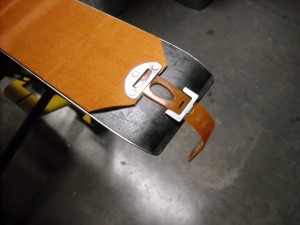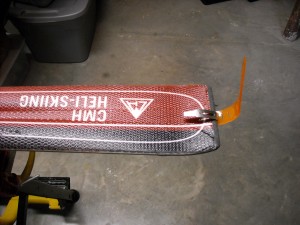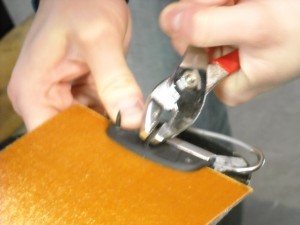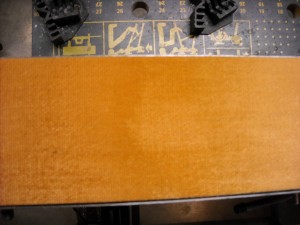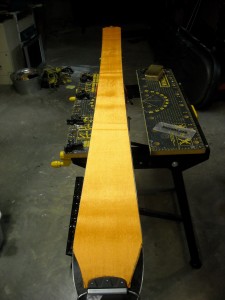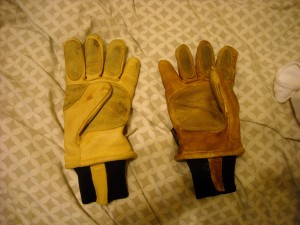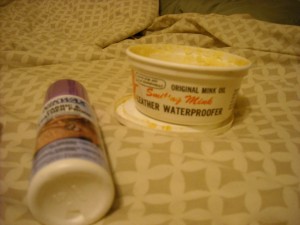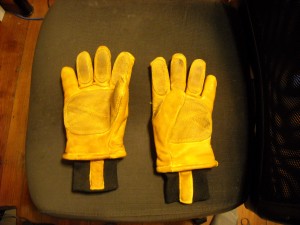It’s possible you’ve heard of binding swap plates before. It’s also possible you’ve even mounted swap plates to your skis a number of times. If so, this might be old hat to you, but personally this is only the third mount I’ve done.
For anyone new to swap plates: swap plates are machined pieces of aluminum that allow you to swap multiple sets of bindings onto a single pair of skis, such as switching between Tech bindings (Dynafits) and in-bounds or side-country bindings.
Disclaimer: I’ve never mounted plates before, so I thought it would be useful to document my process. I don’t have any background as a ski technician or working in ski shops, but I do want my skis to be set up as exact and perfect as possible, so I was incredibly careful. It was definitely a measure a whole ton, drill once, situation.
This year I picked up two new pairs of skis: I perhaps optimistically got a pair of used Praxis Powderboards, and a brand new pair of Blizzard Bonafides. I’m pretty amped up about both pairs, and my initial reaction to the Bonafides is that there’s nothing not to like, though the real test will be when some big storms hit and touring season begins. I wanted to dial in both setups and be able to swap my pair of Rossignol 10-18 Axial2s between them, while being able to mount Dynafits as well. Luckily, Binding Freedom came out with DynaLook plates for just this purpose.
Binding Freedom’s plates come with everything needed for mounting except a drill. The included templates work great for lining everything up. I used them last year when Rob helped me mount Fritschi’s on my Helidaddys.
Prior to setting up my own skis, I refreshed my memory using Brian’s post about inserting quiver killers.
Mounting Process
Alright, enough rambling. Here’s the step by step process for mounting plates to your skis properly:
Before beginning: Grab a drill, bits, a posi-driver (#3 philips screw driver), a hammer, something to punch starter holes with, scissors, masking tape, a sharpie/pen, a ruler, clamps, and a sturdy table to clamp to.
Lay the first ski on the table.

1. Find the center line on the ski, and determine where you want to mount relative to the line. Center marking on boot on the line is fine in many cases. Mark it with a sharpie.
2. Find the center of the center line, to properly line up the center of the paper template.
3. Cut excess paper off the template, and tape it together at the correct BSL. It’s also a good idea to cut notches near the BSL marking to properly line the center of the template up with the center of the ski. I also cut a square out of the center of the template to reveal the markings I’d made underneath.

Ski with template cut and taped in a roughly correct position. Notice the sharpie marks at the center line, and the hole cut at the center line.

Close-up of the template.
4. Do lots of measuring. Make sure that at least each end, and the center is centered on the ski, aka equidistant from the edge. I used a T-square and made measurements from the center of each hole to the edge. As you get the template in the correct spot, tape it to the ski with masking tape.

T-square measuring each hole position.
5. Center punch each hole. Mark it if you want for easier location.
6. Carefully remove the template. You’ll want to reuse this for the next ski. You might want to line up the plates on your hole marks after this to ensure you didn’t miss.
7. Clamp the ski down.

Clamped and ready for drilling.

Marked center punch marks
8. Tape a stopper on the bit or use a bit with a catch sleeve, so that you don’t drill too deep. You certainly don’t want to drill all the way through the ski.

Masking tape depth guide based off the screw length.
9. Drill pilot holes, using something lke a 3/32″ bit. This is especially important for skis with metal so that the bit doesn’t walk over the topsheet.

Toe piece pilot holes drilled.
10. Re-drill with the larger bit.
11. Grab the plates and mount them. Use some sort of adhesive such as super glue, just a bit on each screw to hold it in.

Another look at the plates lined up before drilling.
12. Repeat for the second ski.
Done!

Completed plate mounting!
I’ve tested the new setup on the hill, and so far I’ve been happy with my efforts. Everything seems to be holding together well.
Bring on the snow!


















